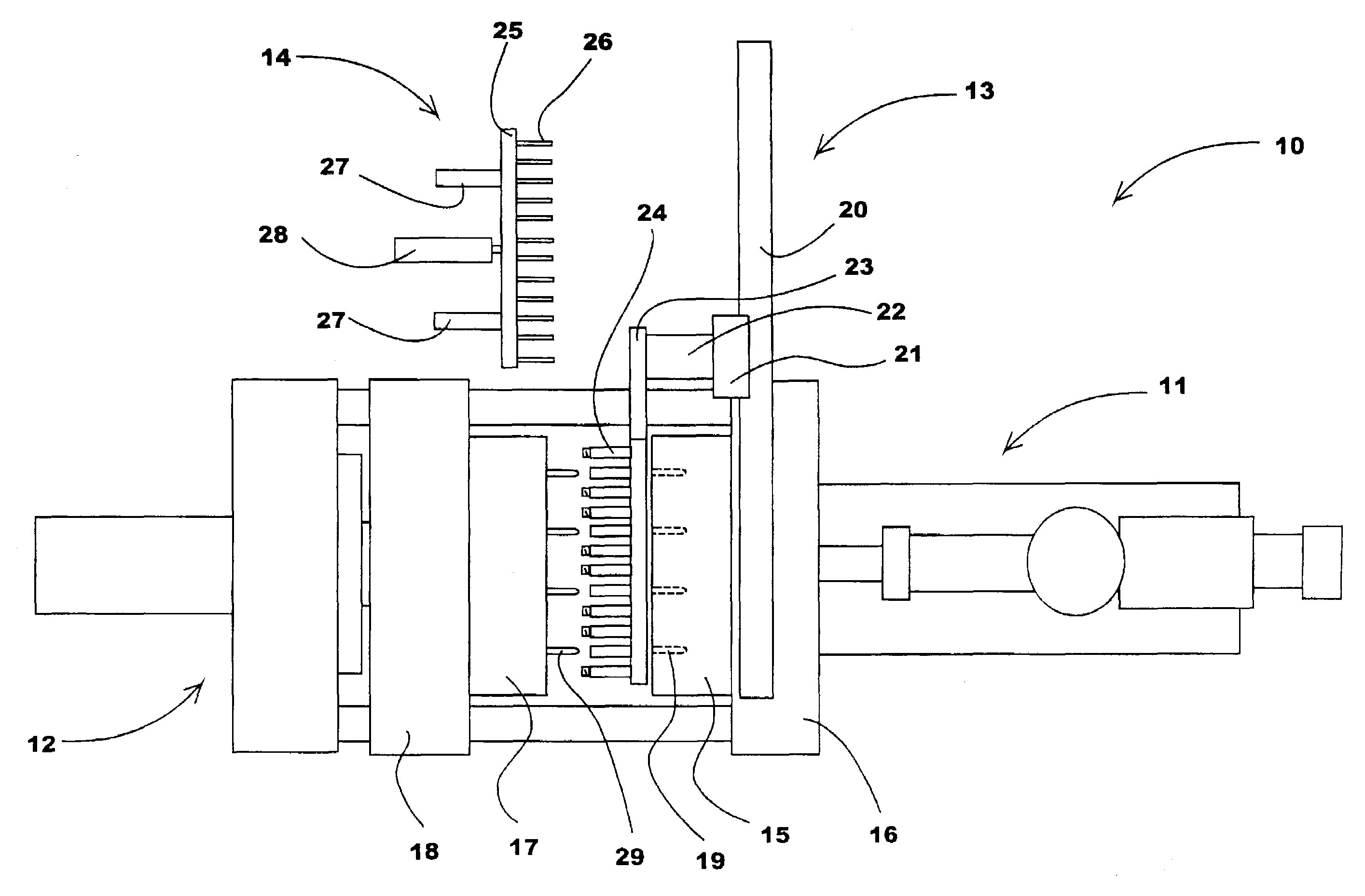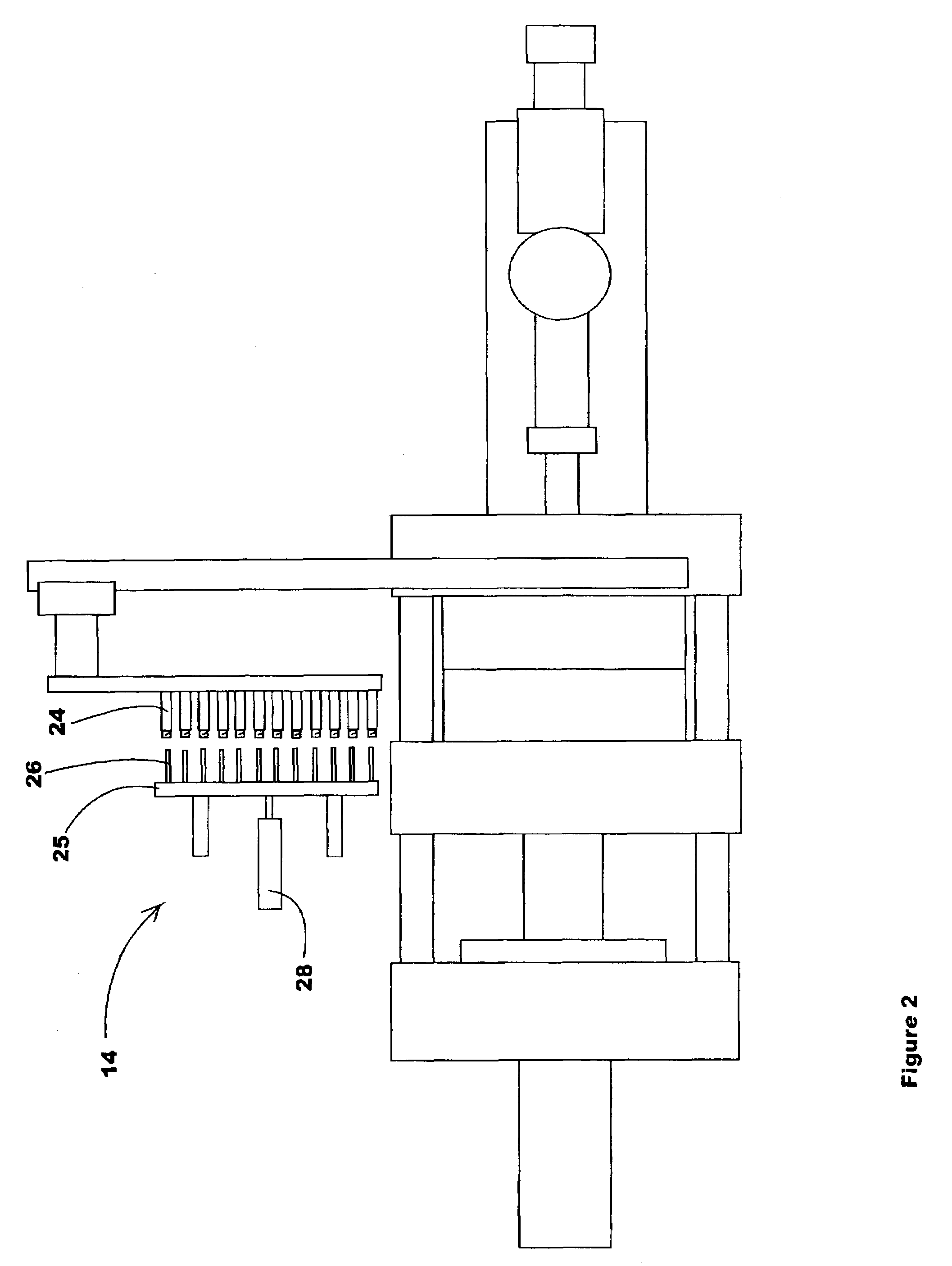Platen mounted post mold cooling apparatus and method
a cooling apparatus and plate mold technology, applied in the field of methods and apparatus for cooling molded plastic objects, can solve the problems of affecting the clarity of the final product, touching parts to weld together, surface softening and being easily marred, etc., to achieve accurate control of motion and stop points, reduce vibration motion and consequential carrier-alignment issues, and simplify the effect of robot structure and function
- Summary
- Abstract
- Description
- Claims
- Application Information
AI Technical Summary
Benefits of technology
Problems solved by technology
Method used
Image
Examples
first embodiment
2. The Structure of the First Embodiment
[0056]The first preferred embodiment of the present invention is shown in FIGS. 5–11. In those Figures, a robot Z beam 30 is attached to a preferably rigid mounting plate 31 that is preferably fastened to the top of a stationary platen 32. By mounting the Z beam 30 this way, a more rigid and less bendable structure is provided. The mounting plate 31 is contoured at 33, in the area immediately above the cavity half 35 to allow easy access into the machine for slings and handling devices to load and unload parts to / from the mold.
[0057]A robot carriage 34 is movably mounted on the Z beam 30 and is moved along the beam by a servo electric belt drive (actuator) system or functional equivalent (not shown). A Y beam 36 (see FIG. 8) is attached beneath the carriage 34 and contains service channels to supply a multi-position take off plate 37. Services such as cooling fluid, vacuum lines, and electric sensor or control circuits are routed directly thro...
second embodiment
4. The Structure of the Second Embodiment
[0066]FIGS. 12 and 13 show a second embodiment of the invention in which two different treatment processes are performed on the parts while they are in their carriers. Co-pending U.S. application Ser. No. 10 / 147,360 filed May 17, 2002 discloses a system for temperature conditioning the interior of freshly molded parts by using a treatment A device and / or by using a treatment B device. The latter inserts a cooling tube with a sealing means so that pressurized cooling fluid introduced into the interior of the part via the tube is temporarily contained therein and pressurizes the part causing it to remain in contact with the inside surface of its carrier to maintain optimum heat transfer to the carrier by intimate contact and thereby resisting the shrinkage of the part as it cools, which, if unchecked, causes the part to lose contact with the inside surface of the carrier.
[0067]FIG. 12 shows an extended treatment A plate 100 on which an addition...
PUM
| Property | Measurement | Unit |
|---|---|---|
| thicknesses | aaaaa | aaaaa |
| thicknesses | aaaaa | aaaaa |
| time | aaaaa | aaaaa |
Abstract
Description
Claims
Application Information
 Login to View More
Login to View More - R&D
- Intellectual Property
- Life Sciences
- Materials
- Tech Scout
- Unparalleled Data Quality
- Higher Quality Content
- 60% Fewer Hallucinations
Browse by: Latest US Patents, China's latest patents, Technical Efficacy Thesaurus, Application Domain, Technology Topic, Popular Technical Reports.
© 2025 PatSnap. All rights reserved.Legal|Privacy policy|Modern Slavery Act Transparency Statement|Sitemap|About US| Contact US: help@patsnap.com



